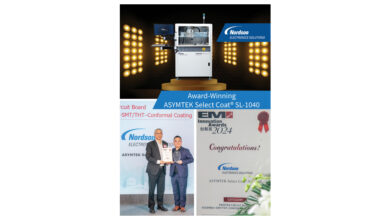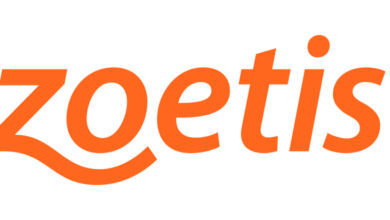Global Aerospace Tubes Market Report 2021 – Size, Share, Trend, Forecast, Competitive Analysis, and Growth Opportunity Forecasts to 2026 – ResearchAndMarkets.com

DUBLIN–(BUSINESS WIRE)–The “Aerospace Tubes Market Size, Share, Trend, Forecast, Competitive Analysis, and Growth Opportunity: 2021-2026” report has been added to ResearchAndMarkets.com’s offering.
Steel & alloys, titanium & alloys, and nickel & alloys are the three major materials used by the tube manufacturers. Titanium & alloys are gaining traction in the market driven by their enormous advantages over others.
The flourishing aerospace industry was hit with the B737Max grounding in 2019 causing dishevel in the industry. In 2020; however, the pandemic hit the industry hard, causing unimaginable disruption and losses for the stakeholders. The aerospace tubes market followed suit and logged a massive decline of -24% in 2020, creating a lag of 4 to 5 years in the market (unlike their pre-COVID estimates that suggested healthy growth in the market, aligning with the market’s movement at the time).
However, the long-term outlook still seems fruitful, well backed by the industry’s buoyant nature and strong fundamentals. The lift of Boeing’s B737Max in October 2020, gradual opening up of travel restrictions, rebounding aircraft deliveries, and Airbus’ significantly healed revenue (reaping profit in Q1 2020 as opposed to grave loss in Q1 2020) are among the few key factors signaling towards the industry’s take off to a healthy recuperation, helping the market stakeholders to recoup at a propitious rate of 8.0% to reach US$ 0.9 Billion in 2026.
Market Segments’ Analysis
Based on the platform type, the aerospace tubes market is segmented as commercial aircraft, regional aircraft, general aviation, military aircraft, helicopter, UAV, and spacecraft. Despite taking a nosedive in 2020, commercial aircraft is expected to remain the largest and the fastest-growing segment of the market during the forecast period.
Increasing demand for lightweight yet durable components and parts, market entry of new players, such as COMAC and Irkut, rebounding aircraft deliveries, and ungrounding of B737Max are some of the key factors propelling the demand for tubes in the commercial aircraft segment.
Based on the material type, the market is segmented as titanium & alloys, nickel & alloys, steel & alloys, and others. Titanium & alloys are expected to remain the largest segment of the market during the forecast period. The density of titanium is 40% less than that of steel- or nickel-based alloys yielding a remarkable weight advantage for aerospace structures.
It is a desirable material for high-performance metal tubes owing to their tensile strength (better than that of austenitic or ferritic stainless steels), strength, stiffness, and toughness along with high melting point. Owing to their massive array of advantages, titanium and nickel are gaining traction in the aerospace industry.
In terms of regions, North America is expected to remain the largest market for aerospace tubes during the forecast period. The USA is the growth engine of the region’s market with the presence of major aircraft OEMs, tier players, raw material suppliers, and part fabricators. Most of the tube suppliers have their presence in the region to address the emergent needs of OEMs and to be the partner for their upcoming aircraft programs or upcoming fuel-efficient variants of existing aircraft programs.
Asia-Pacific is likely to recoup at the fastest rate, witnessing the highest growth during the same period. The highest growth of Asia-Pacific is mainly attributable to the increasing aircraft fleet to support rising passenger traffic; the opening of assembly plants of Boeing and Airbus for multiple aircraft programs; increasing procurement of military aircraft, owing to rising defense budget; and upcoming indigenous aircraft, C919.
1. Executive Summary
2. Aerospace Tubes Market Overview and Segmentation
3. Aerospace Tubes Market – The COVID-19 Impact Assessment
3.1. Aerospace Tubes Market Trend and Forecast (US$ Million)
3.2. Pre-COVID vs Post-COVID Assessment
3.3. Real GDP Loss vs Aerospace Tubes Market Loss (2020-2021)
3.4. Market Scenario Analysis: Pessimistic, Most Likely, and Optimistic
3.5. Market Segments’ Analysis (US$ Million)
3.6. Regional and Country-Level Analysis (US$ Million)
4. Competitive Analysis
4.1. Market Consolidation Level
4.2. Regional Competitive Dynamics
4.3. Market Share Analysis
4.4. Product Portfolio Analysis
4.4.1. By Platform Type
4.4.2. By Material Type
4.5. Geographical Presence
4.6. New Product Launches
4.7. Strategic Alliances
4.8. Porter’s Five Forces Analysis
5. Aerospace Tubes Market Trend and Forecast by Platform Type (2015-2026)
5.1. Insights
5.2. Commercial Aircraft: Regional Trend and Forecast (US$ Million)
5.3. Regional Aircraft: Regional Trend and Forecast (US$ Million)
5.4. General Aviation: Regional Trend and Forecast (US$ Million)
5.5. Military Aircraft: Regional Trend and Forecast (US$ Million)
5.6. Helicopter: Regional Trend and Forecast (US$ Million)
5.7. UAV: Regional Trend and Forecast (US$ Million)
5.8. Spacecraft: Regional Trend and Forecast (US$ Million)
6. Aerospace Tubes Market Trend and Forecast by Material Type (2015-2026)
6.1. Insights
6.2. Titanium & Alloys: Regional Trend and Forecast (US$ Million)
6.2.1. By Grade Type: Ti-6Al-4V, Ti-3Al-2.5V, Commercially Pure, and Others
6.3. Nickel & Alloys: Regional Trend and Forecast (US$ Million)
6.3.1. By Grade Type: Waspaloy, Inconel 625, Inconel 718, and Others
6.4. Steel & Alloys: Regional Trend and Forecast (US$ Million)
6.4.1. By Grade Type: 320 Series (304/304L, 321, and Others), 21-6-9, and Others
6.5. Others: Regional Trend and Forecast (US$ Million)
7. Aerospace Tubes Market Trend and Forecast by Sales Channel Type (2015-2026)
7.1. Insights
7.2. Direct Sales: Regional Trend and Forecast (US$ Million)
7.3. Distributor Sales: Regional Trend and Forecast (US$ Million)
8. Aerospace Tubes Market Trend and Forecast by Region (2015-2026)
8.1. Insights
9. Strategic Growth Opportunities
9.1. Insights
9.2. Market Attractiveness Analysis
9.3. Emerging Trends
9.4. Growth Matrix Analysis
9.5. Strategic Implications
9.6. Key Success Factors (KSFs)
10. Company Profile of Key Players
- AMETEK, Inc.
- Arconic Corporation
- Constellium SE
- Haynes International, Inc.
- Kaiser Aluminum
- Leggett & Platt, Inc.
- Plymouth Tube Co.
- Sandvik AB
- Senior plc
- VSMPO-AVISMA Corporation
For more information about this report visit https://www.researchandmarkets.com/r/6kvoui
Contacts
ResearchAndMarkets.com
Laura Wood, Senior Press Manager
[email protected]
For E.S.T Office Hours Call 1-917-300-0470
For U.S./CAN Toll Free Call 1-800-526-8630
For GMT Office Hours Call +353-1-416-8900





